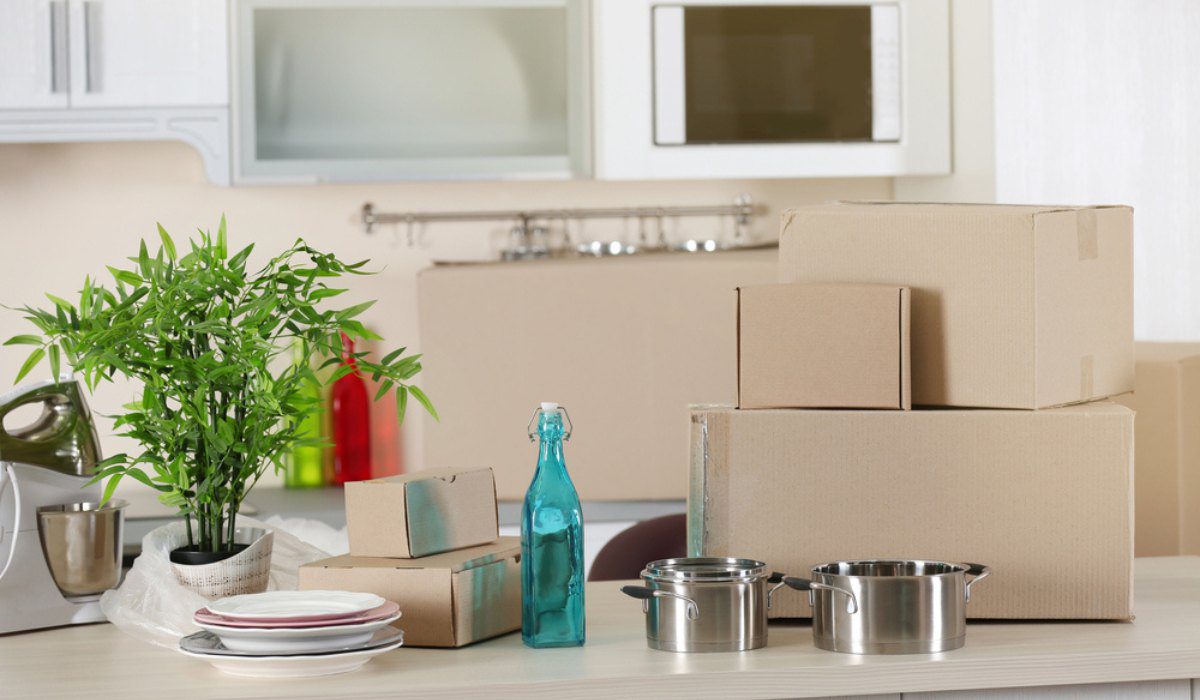While packing for a move is an exciting undertaking, it may be particularly difficult when packing fragile and necessary kitchen equipment. It takes considerable planning and attention to detail to pack kitchen supplies effectively so that everything gets to the new location undamaged. Every item, from containers and delicate china to utensils and silverware, needs to be handled carefully. We’ll go over methods, how-tos and stress-reduction strategies in this guide to help you pack kitchenware for a move more efficiently and neatly.
See also: How to pack fragile items?
Efficient packing techniques
Sorting kitchen items
Sort them according to kind and substance first. Packing can be streamlined by assembling related things in groups.
Essential materials
Assemble the necessary packing items, including bubble wrap, sturdy boxes, packaging tape, packing paper and markers. Make sure you have adequate supplies to prevent shortages at the last minute.
Protective packaging
Use bubble wrap or packing paper to individually wrap fragile items, such as china, glassware and ceramics. To cushion the bottom of boxes from shocks during transit, add additional padding.
Nested packing
For objects such as pots and bowls, use nested packing. To maximise space and use fewer boxes overall, stack smaller goods within bigger ones.
Items needing special attention
Utensils
– To keep utensils tidy, tie them into bundles with zip ties or rubber bands.
– For tiny utensils, use kitchen trays or drawer organisers to keep them from scattering while being transported.
Cutlery
– Wrap knives individually in packing paper or bubble wrap and secure with tape.
– Place knives in a designated box with ample padding to prevent accidents.
China and glassware
– Pack plates vertically to reduce the risk of breakage.
– Place packing material in the empty spaces within the boxes to prevent any movement.
Containers and tupperware
– Ensure containers are clean and dry before packing to prevent mould.
– Stack containers with their lids to save space and keep sets together.
Step-by-step procedure for efficient packing.
-
Prepare
Before packing, tidy and arrange kitchenware. Get rid of any unused or old goods.
-
Carry non-essentials earlier
Start packing things you won’t need right away to ease the stress of packing at the last minute.
-
Labelling
Boxes should be clearly labelled with their contents and the room to which they belong. To make sorting easier, give each area a different colour.
-
Heavy things at the bottom
To prevent damage, put heavier things at the bottom of boxes and lighter, more delicate items on top.
Tips to manage the work and control stress
Make a packing schedule
Divide the packing process into doable assignments and arrange a timetable. Take it room by room so as not to get overwhelmed.
Assign tasks
If you can, assign packing duties to friends or family. Assign defined responsibilities to divide the workload.
Put together a box of necessities
Assemble a box including necessities for the kitchen for the first few days in your new residence. Add necessities such as cutlery, a few pots and pans and essential spices.
Take breaks
The physical and mental strain of packing might be overwhelming. To stay focused and prevent burnout, take regular breaks.
How to use space optimally?
Make use of drawer space
Stow smaller culinary utensils and measuring spoons in bare drawers.
Optimise pot and pan storage
Make use of the space within pots and pans by packing them full of tiny goods or cooking utensils.
Make use of appliance space
When relocating kitchen appliances, stow smaller items like dish towels or oven mitts in the empty spaces inside of them.
Although packing kitchenware for a move involves meticulous preparation and organisation, it may be made easier and less stressful with the appropriate methods. You may make sure that the move to your new house goes more smoothly by classifying your belongings, packing with efficiency and giving priority to necessities. Don’t forget to label boxes precisely, pack carefully and take breaks as needed. Using these techniques will ensure that your kitchen supplies arrive securely and are ready to furnish your new home.
FAQs
Should I pack kitchen items separately from other household items?
It's advisable to pack kitchen items separately to ensure proper organisation and prevent breakage. Use sturdy boxes and provide ample padding for fragile items.
What's the best way to pack knives for a move?
Wrap each knife individually in packing paper or bubble wrap, securing it with tape. Place them in a designated box with extra padding to ensure safety.
How do I prevent spices and pantry items from spilling during the move?
Seal spice containers tightly and consider placing them in a small, sturdy box. For pantry items, use clear plastic bins with secure lids to prevent spills.
Should I pack cleaning supplies separately from kitchen items?
Yes, it's advisable to pack cleaning supplies separately. Place them in a clearly labelled box and keep it accessible for quick cleaning in your new home.
What's the best way to pack fragile glassware for a move?
Wrap each glass individually with packing paper or bubble wrap and pack them vertically in sturdy boxes. Fill empty spaces with additional packing material to prevent shifting.
How can I efficiently pack pots and pans?
Utilise the space inside pots and pans by placing smaller items or kitchen tools inside them. Ensure that heavier items are at the bottom of the boxes to prevent damage.
Should I hire professional packers for my kitchen items?
While it's a personal choice, hiring professional packers can save time and ensure that fragile items are packed securely. Evaluate your budget and time constraints to make the best decision for your move.
| Got any questions or point of view on our article? We would love to hear from you. Write to our Editor-in-Chief Jhumur Ghosh at jhumur.ghosh1@housing.com |







